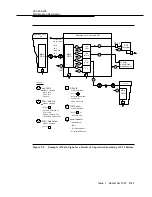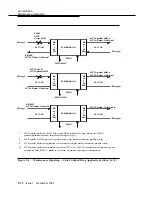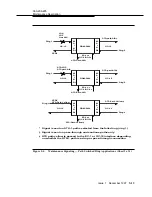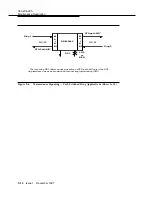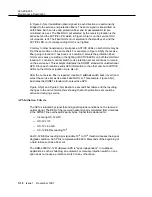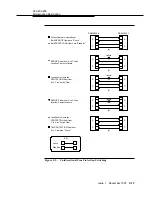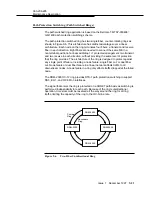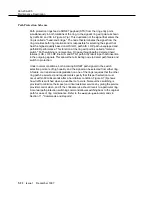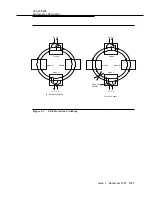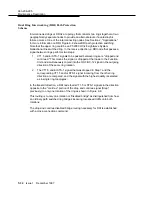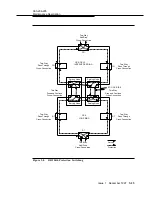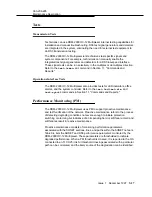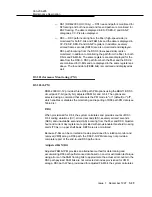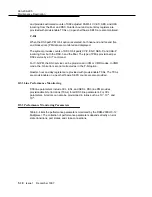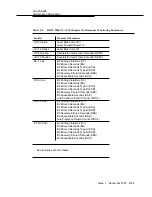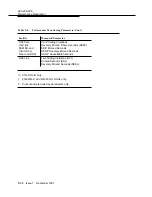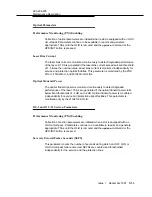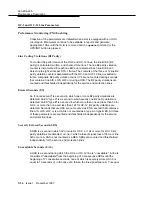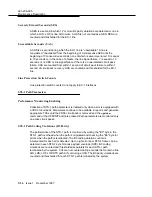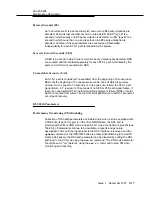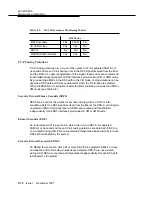
363-206-295
Maintenance Description
9-24
Issue 1
December 1997
Dual Ring Interworking (DRI) Path Protection
Scheme
9
Interconnected rings or DRI is a topology that connects two rings together at two
geographically separate nodes to provide an alternate route if a catastrophic
failure occurs at one of the interconnecting nodes. See Section 2, "Applications,"
for more information on DRI. Figure 9-8 shows DRI path protection switching.
Note that the upper ring could be an FT-2000 OC-48 Lightwave System
bidirectional line switched ring. In the receive direction, a DRI node that passes a
signal between rings performs two steps:
1.
VT1.5 and/or STS-1 signals to be passed between rings are "dropped and
continued." This means the signal is dropped at that node to the Function
Unit and simultaneously copied into the OC-3/OC-12 signal in the outgoing
direction of the same ring rotation.
2.
The VT1.5 and/or STS-1 signal that was dropped in Step 1 and the
corresponding VT1.5 and/or STS-1 signal incoming from the other ring
direction are compared, and the signal with the highest quality is selected
as in single ring topologies.
In the transmit direction, a DRI node feeds VT1.5 or STS-1 signals in the direction
opposite to the "continue" portion of the drop and continue signal (Step 1
previously) to only one rotation of the ring as shown in Figure 9-8.
This routing is to only one rotation or "disabled bridge" as distinguished from how
an ordinary path switched ring bridges incoming low-speed traffic onto both
rotations.
The drop and continue disabled bridge routing necessary for DRI is established
with a cross-connection command.


